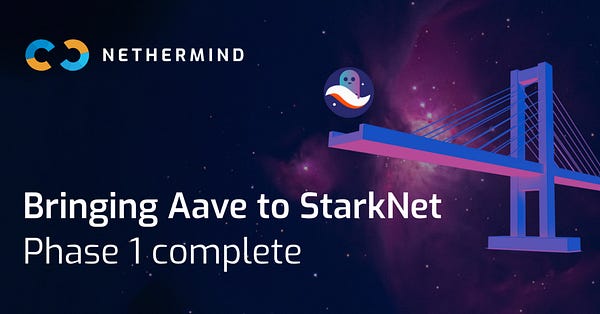Web3 Smoothie🧋, Aave steps into the StarkNet Ecosystem & Arbitrum's case
Protocol of the week: Balancer⚖️
Welcome to the #38th edition of DeFi Fridays!
Access all the previous editions here.
101 today:
An update on Brew Money 🎄
Protocol of the week: Balancer ⚖️
Major happenings in the ecosystem. 🔰
On Brew Money💜
Hi Readers, as most of you know, Brew Money is soon launching on Product Hunt.
And since we are a DeFi Product, we are proud to announce that we will also be launching on Smoothie on 12th December.
Smoothie is a discover-to-earn web3 platform where users are awarded points to upvote a product. As you earn more points, you gain more upvoting weight & reputation.
We would love your support when we launch. To support Brew Money, just connect your wallet (MetaMask, Coinbase or WalletConnect) to Smoothie and upvote Brew Money on 12th December.
Protocol Of The Week: Balancer
What is Balancer?
At its core, Balancer Protocol is an infrastructure provider for Decentralized protocols & a Decentralized Exchange (DEX).
What are they doing?
Balancer (like us), believes in positive-sum games.
It provides decentralized infrastructure templates for dapps to quickly build on.
It is a DEX i.e, users can swap tokens and/or invest idle tokens in the liquidity pools to earn passive rewards on it.
Let’s check out a few examples of infrastructure templates & the dapps that have been built on them:
Template No. 1: Customizable AMM Templates with Smart Pools.
dApp Built using the template: PieDAO
Template No. 2: Liquidity Bootstrapping Pool (LBPs) - Before AMMs became mainstream, projects had minimal options to get liquidity for their token. Balancer’s LBP template allowed teams to release a project token while at the same time building deep liquidity. Read more about it here.
dApp/Campaign Built using the template: BAP0 by Bankless
What are Customizable AMM Templates with ‘Smart Pools?
Liquidity Pools on a network are created when us, as users, add tokens in a pool to get LP rewards. These pools are built on smart contracts. Smart Contracts are code that allow any sort of logic to be built into the liquidity pool.
Customizable Smart Pools Templates built by Balancer Labs allow developers to make changes in the Liquidity Pool’s Core Smart Contract for Custom Use-Cases.
However, to build a deeper understanding on this topic, we must first understand what AMMs & Pools are.
In our last edition, we asked our readers if they wanted a detailed explainer on AMMs & Pools and the responses said ‘yes.’ We even got a few questions related to bridges, slippage costs, etc. We are preparing the explainer & will share it with you soon.
If you have any questions related to AMMs, DEXs & Pools, please ask us - we will cover it in the explainer. — Send us a question.
We explain one DeFi Protocol every Friday
Major News in the Ecosystem:
🔰The Aave <> StarkNet bridge for aTokens has been activated.
This bridge marks the first step of Aave into the StarNet ecosystem. The bridge lets you hold and trade Aave aTokens on StarkNet while still accruing Aave rewards from Ethereum. Read more:


🔰Chainlink Staking v0.1 is live
Chainlink is an oracle network built on Ethereum. The network is used to transfer tamper-proof data from off-chain sources to on-chain smart contracts.
Why is this significant?
Chainlink is a leading web3 oracle network. It is responsible for securely enabling trillions of dollars in transaction value across the blockchain economy. The more LINK that’s staked, the more that Chainlink oracles are incentivized to generate accurate oracle reports through a system of rewards and penalties.
More Good Reads:
✍️A deep-dive on Scroll - L2 Scaling Solution for Ethereum.
That’s it for today, folks. See ya next Friday. 🧢
Disclaimer: Nothing included in DeFi Fridays should be taken as financial advice.



